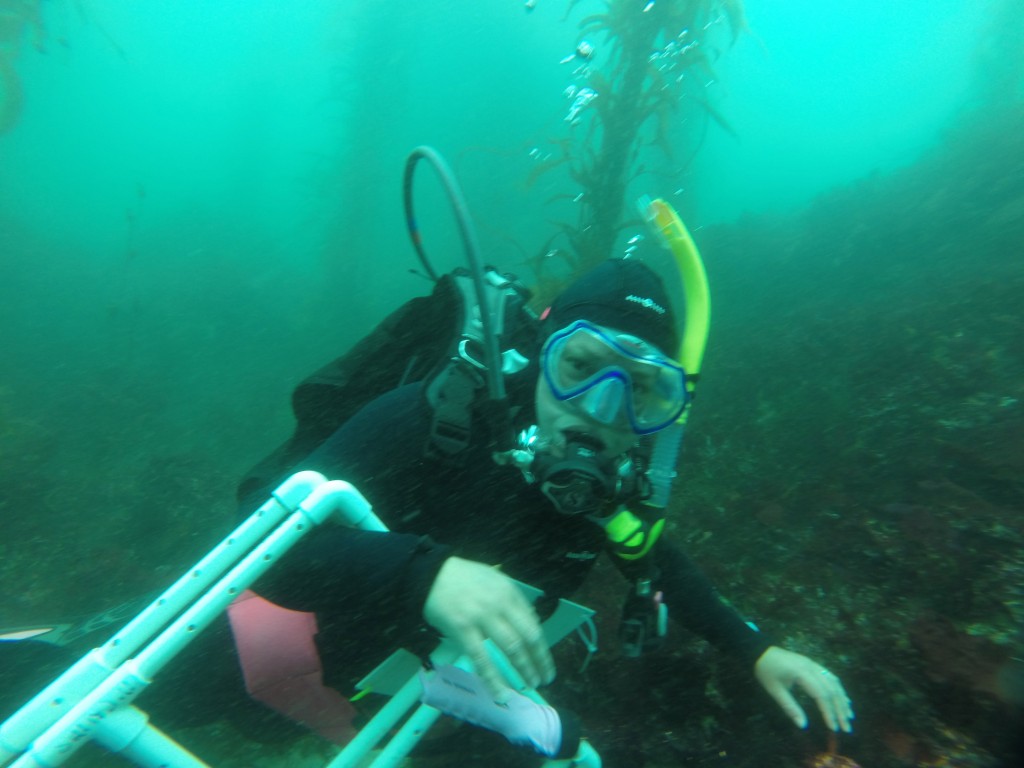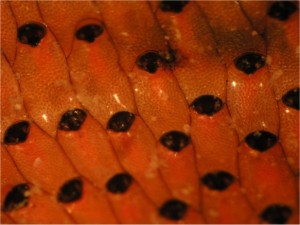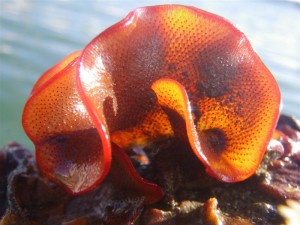by Michelle Marraffini, SERC marine biologist

SERC diver Lina Ceballos carries sampling equipment down to depth to survey species underwater.
(Michelle Marraffini/SERC)
Lina Ceballos, Chela Zabin and I from the Smithsonian Environmental Research Center (SERC), along with Steve Lonhart from the Monterey Bay National Marine Sanctuary (part of the National Oceanic and Atmospheric Administration, aka NOAA) and other volunteers conducted surveys of rocky reefs to determine where, when and how non-native species introductions occur and how they spread along the west coast. Non-native species can be spread by many human vectors such as shipping traffic, aquaculture and aquarium trade. These new species have many interactions with the native community and can alter the ecosystem. Since many of these animals are moved (accidentally) with vessels, marinas and bays have been the starting point for most of our surveys. However, our recent surveys have taken us out of harbors and into the kelp forests off the beaches of Monterey Peninsula. Here we look for a list of target species as they move south out of Monterey Harbor.

Steve Lonhart of NOAA uses a quadrat to estimate the percent cover of coralline, a red algae on the rock below. (Chad King/MBNMS/NOAA)
Now we plunge into the ocean, swim through small breaker waves, and descend at last into the kelp forest. We begin our search for non-native species under the kelp forests just off the coast, about 35 feet underwater. In buddy pairs, we lay down a 30-meter measuring tape transect, then place our quadrat at set points along this tape to estimate the amount of space (percent coverage) occupied by different animals and or plants (algae). This method gives us a snapshot of what species are living in a 30-meter-long by 2-meter-wide area (or 60 square meters).

Watersipora close-up. Each black oval is a zooid (individual animal). Together they can grow into a large colony. (SERC)
Along the transect we find numerous species of invertebrates, including anemones, seastars, bryozoans and tunicates, as well as many species of algae, including some coralline algae (pink branches seen in the second photo). Many species are native, but there are some non-natives, such as the bryozoan Watersipora, which is one of the species on our target list. Watersipora is a red bryozoan with black zooids that look like seeds on a watermelon. This species can grow as a thin crust attached to a rock, algae or other hard substrate, or it can start to grow away from the substrate and begin to look like a head of lettuce.
We expect that non-native species are moving from marinas in Monterey Harbor to these natural areas, and these surveys will help us understand what species are spreading and how far. This research also provides a baseline for long-term analyses, to explore how native marine communities are responding to non-native species and other forces of change.


